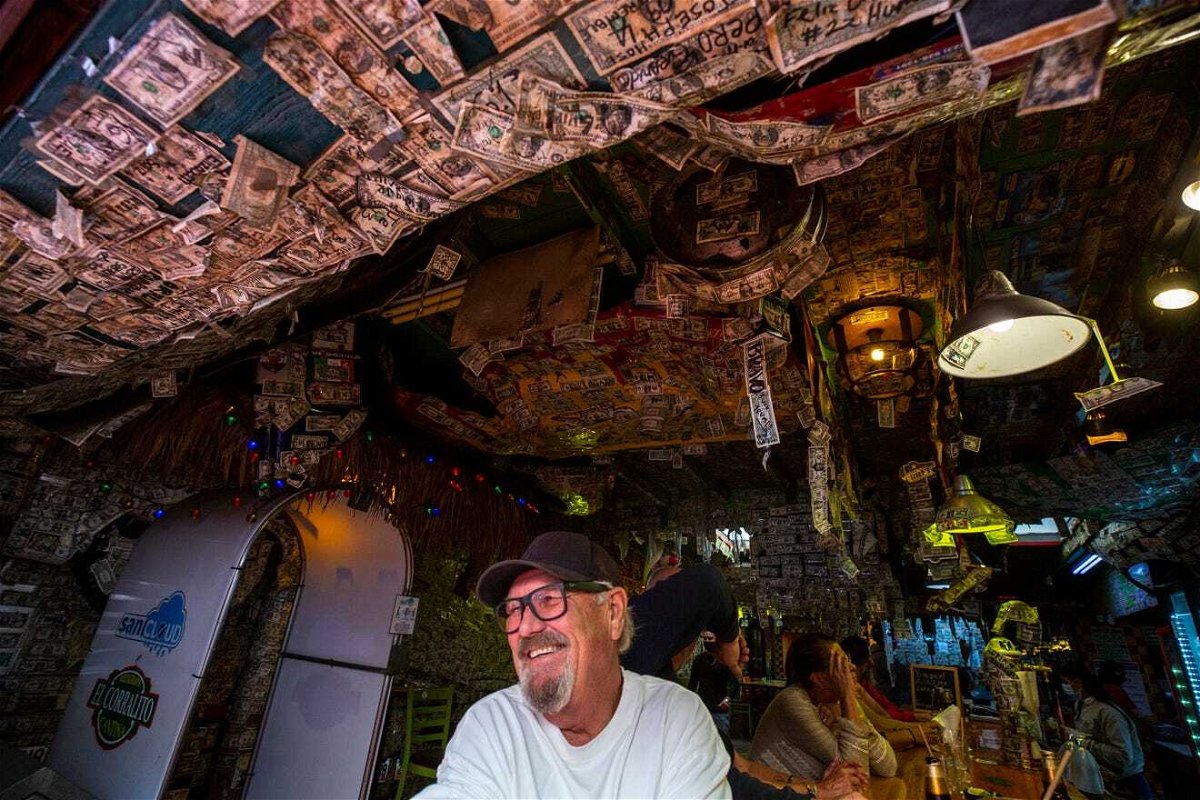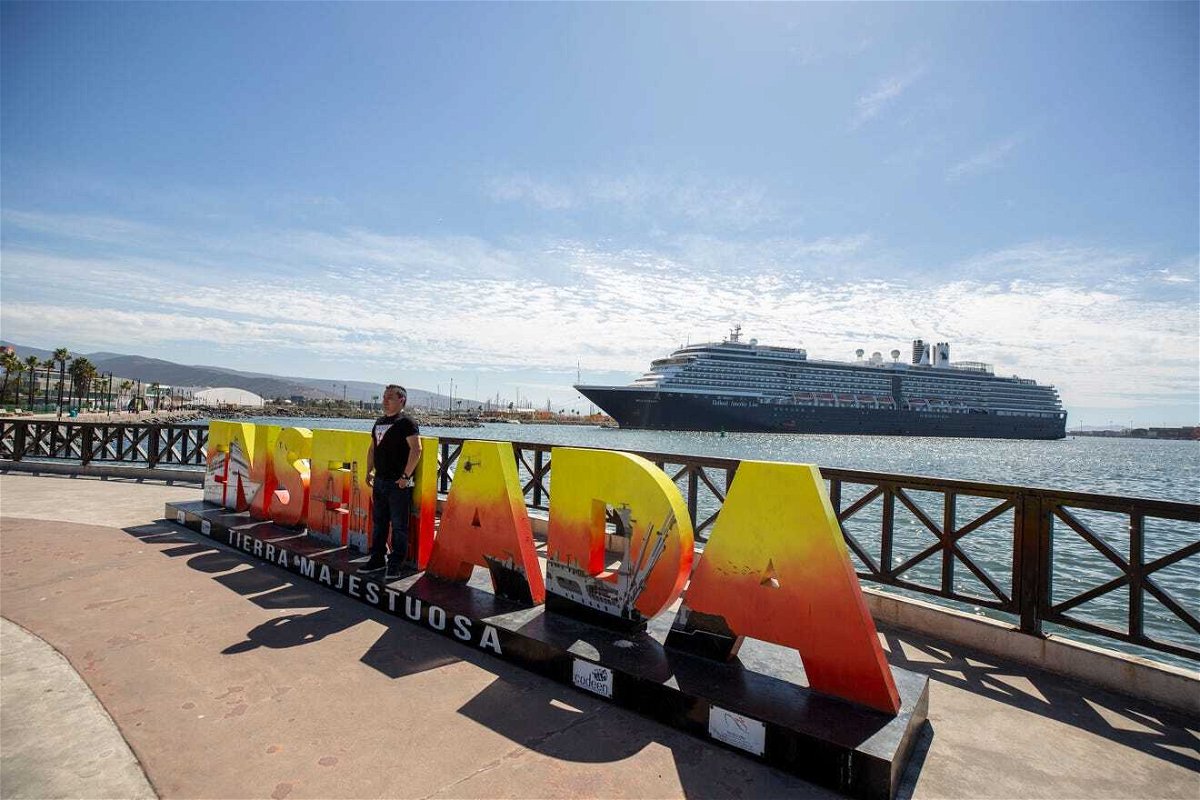US citizens crisscrossing border throughout pandemic; Mexican tourists may do the same

(Editor's note: This story was produced as part of the Puente News Collaborative, a bi-national partnership of news organizations in Ciudad Juárez and El Paso.)
By Veronica Martinez/La Verdad and Lauren Villagran/El Paso Times
ENSENADA, Mexico — Kurt Turgasen took a swig from a cold Pacifico at a beachside bar lined with tourists speaking English, watching replays of NFL games.
Pandemic restrictions on non-essential travel at the U.S.-Mexico border never stopped the 66-year-old homebuilder from California from crossing back and forth, he said — but they frustrated even his wealthiest Mexican friends.
"For me, it wasn't even an issue," he said. "It's a weird situation because Mexican friends who own thousands of acres of land here and have crossed their whole lives are having a hard time. I hear them complaining about it all the time."
On March 21, 2020, at the outset of the COVID-19 pandemic, the Trump administration closed land ports of entry to all but essential traffic to reduce travel between the United States and its neighbors, Mexico and Canada. The Biden administration said it will lift the restrictions at land ports of entry for vaccinated tourists on November 8.
After 19 months, the partial closure of the country's land borders was becoming increasingly difficult to justify, as North American economies are largely open and U.S. citizens, considered "essential" under the rules, crisscross the border millions of times each month.
Meanwhile, Mexican and Canadian visa holders have been able to fly into the United States, but still cannot walk or drive between close-knit communities such as Juárez and El Paso or Tijuana and San Diego. That will begin to change next month, with the easing of the restrictions.
"It's not that they have to go over," Turgasen said, streamers of actual U.S. dollar bills hanging from the ceiling above him. "But a lot of them with money, they do their banking over there. They like going shopping for clothes, goods, auto parts, electronics, especially right now, with Christmas coming."

Traffic rises despite restrictions
Cross-border traffic at land ports has risen as economies on both sides of the border have reopened and vaccines have become widely available in the U.S. and northern Mexico.
Northbound vehicles cram the San Ysidro port of entry connecting Tijuana and southern California every day, as vendors snake through more than a dozen lanes of traffic hawking food and handicrafts.
The number of people crossing at San Ysidro, the largest port on the U.S.-Mexico border, has climbed 25% in recent months to more than 1.9 million people in passenger vehicles in June, up from about 1.5 million in January, according to Bureau of Transportation statistics. More than 400,000 crossed by foot in June alone.
El Paso ports of entry are routinely backed into Juárez with people waiting an hour or more to cross. More than 837,000 people crossed in vehicles at El Paso ports in June, up 27% from 658,000 in January, according to the Bureau of Transportation. More than 200,000 people crossed by foot in June at El Paso ports.
The restrictions on non-essential travel carved out numerous "essential" exceptions, including:
- U.S. citizens
- Lawful permanent residents
- Government officials
- Emergency responders
- Cargo truck drivers
- Individuals traveling to study, receive medical attention or work with authorization
The Department of Homeland Security said in its last notice on the restrictions, in September, that "the risk of continued transmission and spread of the virus associated with COVID-19 between the United States and Mexico poses an ongoing 'specific threat to human life or national interests.'"
The rules barred individuals "traveling for tourism purposes" — effectively keeping out hundreds of thousands of Mexican holders of the B1/B2 tourist visa who live in border cities. The restrictions prohibited the cross-border shopping trips that many fronterizo Mexicans love and U.S. border town businesses depended on before the pandemic.
Some Mexican visa holders were going to great lengths to visit the United States, shifting their dollars from border towns to places they can fly with ease. Others let their U.S. travel visas expire and say they are spending their money in Mexico.
The restrictions on non-essential travel made no exceptions for travel that many people at the border consider essential to their lives: to visit spouses, partners, parents and children divided by the U.S.-Mexico border.
In a call with reporters on Tuesday, a senior White House official said the administration is creating "consistent, stringent protocols for all foreign nationals traveling into the United States, whether by land or air."
"We understand how valuable the cross-border travel from Canada and Mexico is to the economic activity in border communities and to our broader economy," the senior administration official said. "And we also know how meaningful the ability to travel is to maintain personal ties between people living on either side of the northern and southern U.S. borders."
Mexican tourists skip over Borderland
Margarita Arreola’s home is filled with portraits of her family, who are scattered on both sides of the border. School photos of her grandchildren rest on a glass bookcase along with last year’s Christmas postcards and pictures of the family gathering around a birthday cake.
“We would always get together here in Juárez at my house or with one of my daughters in El Paso,” Arreola said.
The fronteriza used to cross from Ciudad Juárez to El Paso at least three times a week. A SENTRI pass allowed her to cross the border within minutes to pick up her grandchildren from school every Tuesday and Thursday, spend the evening at her daughter’s home and occasionally meet with friends for breakfast and buy groceries.
During the nearly 20 months of restrictions, family gatherings have been confined to the south side of the border, Arreola said. She hasn’t crossed to El Paso since March 18, 2020, she said, remembering the exact date ― a sign of the trauma the restrictions exacted on border families.
Her daughter moved to Denver. When Arreola decided to visit, the trip felt “like a marathon” that was also four or five times the cost, Arreola said.
“If you’ve been living here for your entire life, you know that crossing is very simple,” she said.
This time, unable to drive over the border for a road trip to Colorado, Arreola and two family members took a four-hour bus ride south to Chihuahua City one morning in August and waited all day for a 7 p.m. flight to Mexico City. The international flight to Denver didn’t depart until the next day at 8 a.m., so they booked a one-night stay at a hotel near the airport.
The flights cost 15,000 pesos each, or about $720 at the current exchange rate, she said. The extra transportation and hotel costs added another 8,300 pesos, or $400.
For Arreola, the restrictions imposed an unequal burden on Mexican nationals.
“I don’t think it’s fair. I don’t think it makes sense. (U.S. residents) can bring the virus as much as we can,” she said. “How come they’ve always had the priority to cross and we’ve been denied?”
For Americans, 'it's a quick trip'
English-speaking tourists in Baja California, whose absence in 2020 was felt acutely, are again crowding Ensenada's malecon oceanside promenade and the shops and bars along First Street two blocks inland.
Los Angeles-based Ashley Johnson and Berk Gibbs strolled with friends as boats bobbed and floated at the dock and vendors sold day trips out to sea. Disco music beckoned from a yellow boat waving a Mexican flag, but the group decided to stop for micheladas and margaritas at a restaurant with a view.
"I have been coming down once or twice a month the entire pandemic," said Gibbs, a tattoo artist. "It's a quick trip for us."
Their friend, a tattoo artist from Venezuela who calls himself Topo, said he pops into Los Angeles now and again, too, on a tourist visa. But instead of driving across the border — a four-hour ride — he drives 20 hours south to Los Cabos and flies to L.A.
"You can drive down but you can't drive up," he said.
With a return to normalcy on the horizon, tourists in Mexico may again take highways north.
Veronica Martinez of La Verdad de Juárez can be reached at vmartinezmedia@gmail.com.
Lauren Villagran can be reached at lvillagran@elpasotimes.com.

